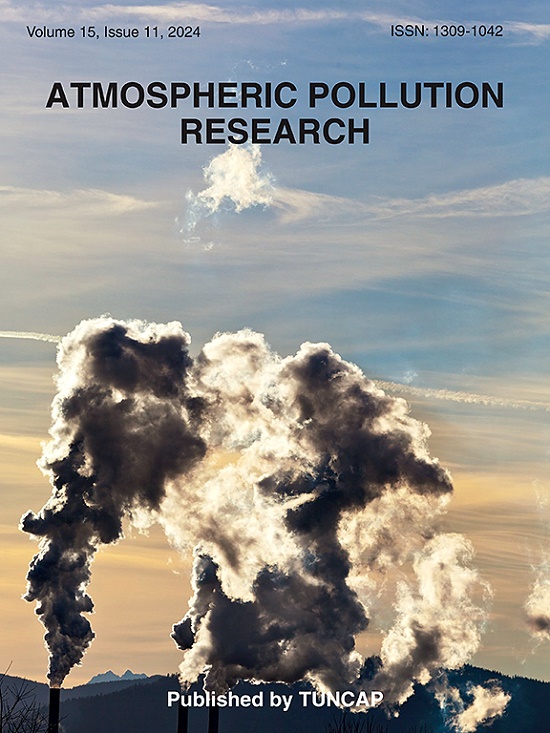Aerosol chemical composition and sources during unexpected wintertime haze episodes in 2023 in urban Xuzhou of eastern China
IF 3.9
3区 环境科学与生态学
Q2 ENVIRONMENTAL SCIENCES
引用次数: 0
Abstract
Understanding the chemical composition and sources of aerosols during extreme haze episodes is essential for effective air quality management, particularly in rapidly industrializing regions. This study investigates the aerosol chemistry and sources during unexpected winter haze events in December 2023 in Xuzhou, Eastern China. Continuous online monitoring of fine particulate matter (PM2.5), combined with detailed chemical analysis and concentration weighted trajectory (CWT) analysis, was conducted to elucidate the sources and processes driving these pollution episodes. Positive matrix factorization identified five major PM2.5 sources: secondary nitrate-rich aerosols, vehicular emissions, industrial activities, dust emissions, and coal combustion. Nitrate was the dominant component during severe haze periods, whereas dust significantly contributed during dust storm episodes. CWT analysis highlighted substantial regional contributions, with industrial and dust-rich areas to the northwest and marine aerosols from coastal regions playing key roles. The findings suggest that nitrate formation and regional dust transport were the primary drivers of severe winter haze in Xuzhou. Effective mitigation strategies should prioritize nitrogen oxides emission control and dust management. This study underscores the necessity of regional collaboration and continuous monitoring to tackle complex air pollution challenges.
2023年中国东部徐州市冬季非预期霾期气溶胶化学成分及来源
了解极端雾霾期间气溶胶的化学成分和来源对于有效的空气质量管理至关重要,特别是在快速工业化地区。研究了2023年12月徐州市冬季雾霾天气的气溶胶化学特征及其来源。通过对细颗粒物(PM2.5)的连续在线监测,结合详细的化学分析和浓度加权轨迹(CWT)分析,阐明了这些污染事件的来源和过程。正矩阵分解确定了5个主要的PM2.5来源:富含二次硝酸盐的气溶胶、车辆排放、工业活动、粉尘排放和煤炭燃烧。在严重雾霾期间,硝酸盐是主要成分,而在沙尘暴期间,沙尘是主要成分。CWT分析强调了实质性的区域贡献,西北的工业和沙尘丰富地区以及沿海地区的海洋气溶胶发挥了关键作用。研究结果表明,硝态氮的形成和区域沙尘的输送是徐州冬季重度雾霾的主要驱动因素。有效的缓解战略应优先考虑氮氧化物排放控制和粉尘管理。这项研究强调了区域合作和持续监测的必要性,以应对复杂的空气污染挑战。
本文章由计算机程序翻译,如有差异,请以英文原文为准。
求助全文
约1分钟内获得全文
求助全文
来源期刊

Atmospheric Pollution Research
ENVIRONMENTAL SCIENCES-
CiteScore
8.30
自引率
6.70%
发文量
256
审稿时长
36 days
期刊介绍:
Atmospheric Pollution Research (APR) is an international journal designed for the publication of articles on air pollution. Papers should present novel experimental results, theory and modeling of air pollution on local, regional, or global scales. Areas covered are research on inorganic, organic, and persistent organic air pollutants, air quality monitoring, air quality management, atmospheric dispersion and transport, air-surface (soil, water, and vegetation) exchange of pollutants, dry and wet deposition, indoor air quality, exposure assessment, health effects, satellite measurements, natural emissions, atmospheric chemistry, greenhouse gases, and effects on climate change.
 求助内容:
求助内容: 应助结果提醒方式:
应助结果提醒方式:


